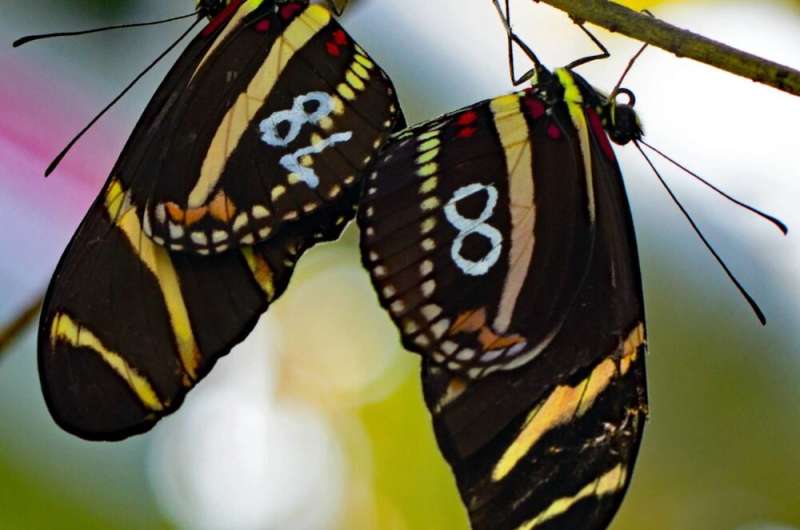There's no place like home: Butterflies stick to their burbs

Birthplace exerts a lifelong influence on butterflies as well as humans, new research reveals.
In a paper published in the journal Proceedings of the Royal Society B: Biological Sciences, Macquarie University ARC Future Fellow Associate Professor Darrell Kemp reveals that the American passionfruit butterfly, Heliconius charithonia, selects its mate and egg-laying site based on the species of plant that hosted its own egg.
The finding constitutes the first evidence that conditions in very early life for butterflies determine adult behaviour—something many researchers previously thought impossible.
"There was considerable doubt about this," says Professor Kemp. "How can conditioning that occurs in a developing caterpillar survive the complete neural rearrangement that happens once it pupates?
"This research however goes a long way to demonstrating that it does."
H. charithonia butterflies feed and lay eggs on more than 20 species of plants, all of which belong to a single genus, Passiflora.
To establish his findings, Dr. Kemp collected 38 wild female butterflies from a breeding colony in Florida. These insects were breeding exclusively on a passionfruit species known as Passiflora incarnarta.
Eggs laid by the cohort were then randomly assigned either to P. incarnarta plants, or to a related species, P. suberosa.
After the caterpillars developed and pupated into butterflies, the adults were released into a large rainforest enclosure. Here, their reproductive behavior was found to carry intriguing imprints of their early-life hostplant experience.
Females raised in P. suberosa tended to mate with males which had grown up on the same species, and then tended to lay eggs on it, as well. This was the case even though P. incarnarta generation members were on the whole larger and developed more rapidly.
"Males as well as females were influenced by their birthplaces, which in insects is really unusual," says Dr. Kemp.
"It's possible that this sort of preferential behavior could influence the development of distinct and isolated populations—and perhaps eventually new species."
More information: Darrell J. Kemp. Manipulation of natal host modifies adult reproductive behaviour in the butterfly Heliconius charithonia, Proceedings of the Royal Society B: Biological Sciences (2019). DOI: 10.1098/rspb.2019.1225
Journal information: Proceedings of the Royal Society B
Provided by Science in Public

















